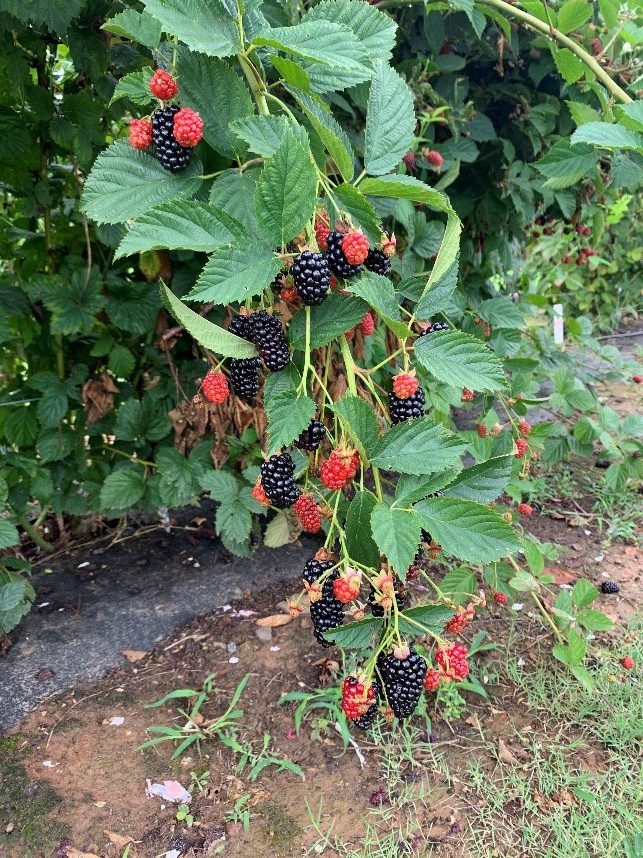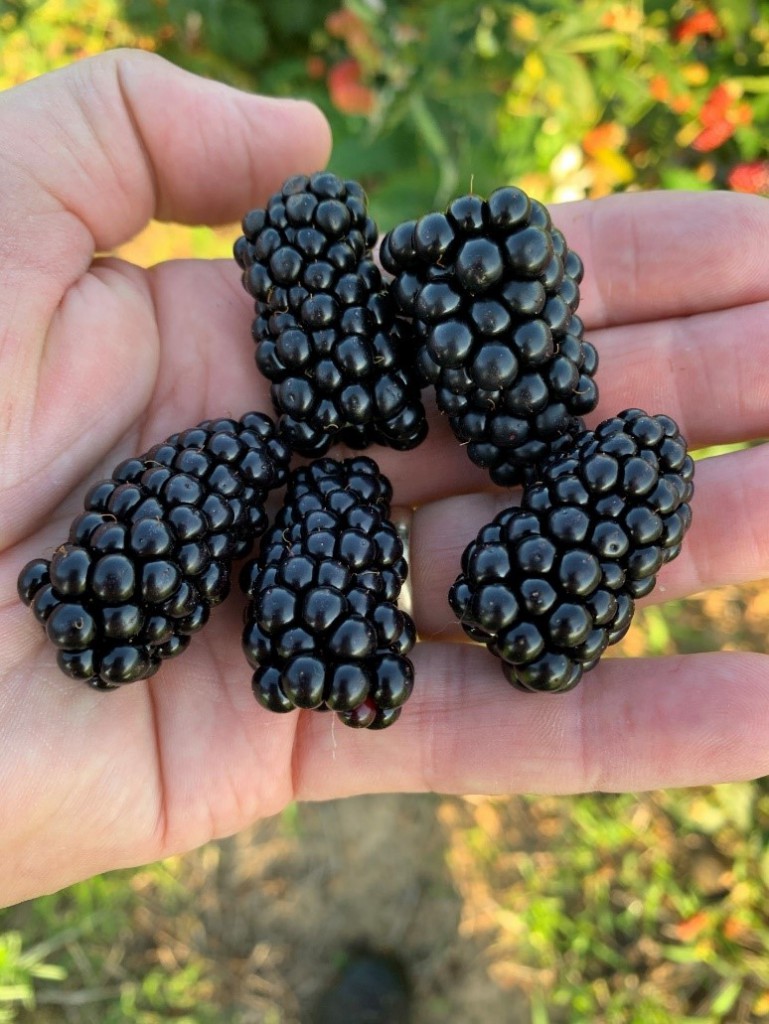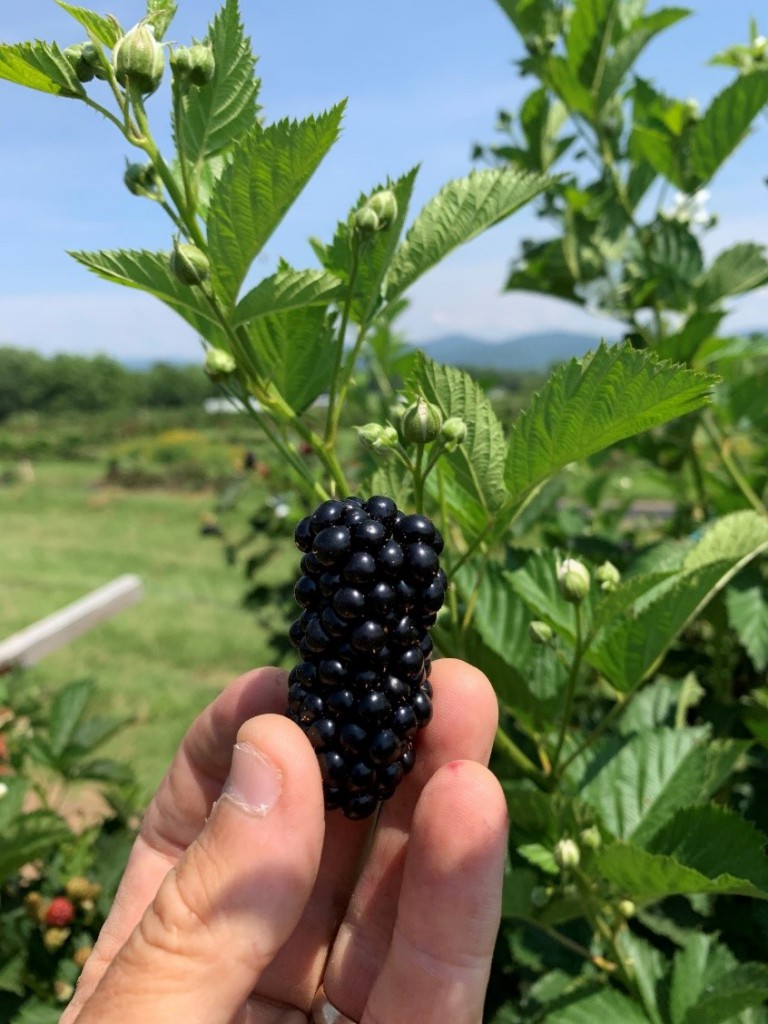By John R. Clark, University of Arkansas
A new blackberry has been released by the University of Arkansas System Division of Agriculture (UA), named Prime-Ark® Horizon. This is the sixth public primocane-fruiting variety from the UA breeding program. Although primocane fruiting does not hold substantial potential in the deep South, this type of berry is having some success in mid to upper South in some years.
Key items to note about Prime-Ark® Horizon:
- Primocane fruiting, thorny
- A complement to Prime-Ark® 45 for commercial production for primocane fruit
- High floricane crop potential
- Primocane berries are large, with larger fruit size potential than other primocane-fruiting varieties in summer heat and potential primocane crop extension beyond the Prime-Ark® 45 season
- Berries are very firm in storage, and otherwise comparable to Prime-Ark® 45 in postharvest potential
- Soluble solids averaging 10% and titratable acidity 0.92%, providing good sugar/acid balance
The majority of the testing of Prime-Ark® Horizon was done at the location of its development, the UA Fruit Research Station, Clarksville, AR, with data and observations collected from plants over 8+ years. The cross for Prime-Ark® Horizon was made in 2008, and it was selected in 2010. Additional data and observations were collected by Josh Beam at a Dole Berry test site near Lincolnton, NC (six years), and Karen Blaedow, North Carolina State University Mountain Horticultural Crops Research and Extension Center in Mills River, NC (two years). I greatly appreciate the testing results attained by these colleagues. I have included comments from their findings in the following discussion.
Ripening: Floricane first harvest is a few days later than Prime-Ark® 45 and near that of Ouachita (June 12). Floricane harvest period averaged 40 days. Primocane first harvest averaged August 4, just before Prime-Ark® 45. Primocane fruiting can potentially extend until mid-October, providing a fruiting period of over 60 days.
Josh often found floricane harvest date to be similar to that observed in Arkansas. Primocane harvests began a little earlier than Arkansas, ranging from mid to late July. He harvested primocane fruit to late September or mid-October depending on the year. Karen’s first harvest for primocane fruit was August 6 in 2019.
Berry: Prime-Ark® Horizon’s berry weight averaged 7.8 g overall for floricanes. Berries were often up to 10 g for floricanes. The primocane berries averaged 7.3 g. The floricane and primocane average weights are much closer than other primocane-fruiting varieties, suggesting more berry weight stability in summer heat during primocane flowering and fruiting.
Josh found floricane berries to range from 9-11 g, and Karen’s planting averaged over 13 g in 2019. Josh found primocane berries to be 11-15 g, equally as large as floricane berries. This is unusual as primocane berry weight in southern locations is typically associated with smaller berries due to the impact of heat on fruit set and development.
Berry shape was noted to vary with Prime-Ark® Horizon, and in some years curved berries were observed in most test locations. Primocane double berries were not seen, as is common with Prime-Ark® 45 in Arkansas, due to heat effects. This further suggests some heat tolerance for Prime-Ark® Horizon. However, temperatures above 90oF were observed to occasionally result in primocane flower death with Prime-Ark® Horizon, so full heat tolerance is not implied.
Yield: Prime-Ark® Horizon has very high yield potential on floricanes, and exceeded yield of Natchez in some years. Floricane yields have exceeded 30,000 lb./acre in research plots usually in the year after planting. Floricane yield is influenced by the degree of primocane fruiting the prior year. More primocane fruit production often equates to lower floricane yields the following season. Crop control with pruning is strongly advised to balance crop, particularly in the first year of floricane fruiting if no primocane crop is produced in the planting year. Primocane yields ranged from 3,000-9,000 lb./acre depending on year and environment.
Josh reported very high yields also, with over 2,500 flats/acre on floricanes, and then another 1,500 flats per acre on primocanes (a flat has 4.5 lb. weight). Cane management will likely be a key component to achieving full yield potential and consistency.
Flavor: Flavor has consistently been rated good with light aromatics over many years of evaluations. As with most blackberry varieties, Prime-Ark® Horizon can have variation in sweetness. Berries were noted at times to be tart, particularly when very high floricane crop was experienced. The overall average soluble solid content was 10% (ranging from 9-11%). Titratable acidity averaged 0.9% (ranging from 0.8-1%), which is within the “reduced acidity” target of the UA breeding program.
Josh consistently noted the fruit to be sweet over many years of observation, with soluble solids content of 10% or higher. Karen found fruit to have a pleasant flavor but at times variable.
Postharvest: Storage for 7 days has been comparable to Prime-Ark® 45 in reddening/reversion. It has also shown potential for longer-term storage particularly in the retention of firmness. In addition to excellent firmness in storage, leakage and decay have been among the best measured in the Arkansas program.
Plants: Prime-Ark® Horizon plants have shown good health, except when excessive floricane yields were experienced that resulted in reduced floricane leaf size as well as upward leaf curling. No orange rust nor anthracnose were observed on Prime-Ark® Horizon. Winter hardiness has been comparable to Ouachita, and has shown very limited winter injury to a low of 1oF. Spring freeze damage has not been observed. Chilling requirement is unknown, but is anticipated to be approximately 300 hours.
Plant vigor can be high, and this can result in extended primocanes with long fruiting laterals. Overall, Prime-Ark® Horizon has reduced thorns compared to Prime-Ark® 45. Thorn density on canes is 45% lower than Prime-Ark® 45 but density is similar on laterals and leaf petioles. Josh noted high vigor and commented that primocane management would have to be worked out to attain maximum yield. Karen found Prime-Ark® Horizon to be one of the more vigorous varieties in her trial.


